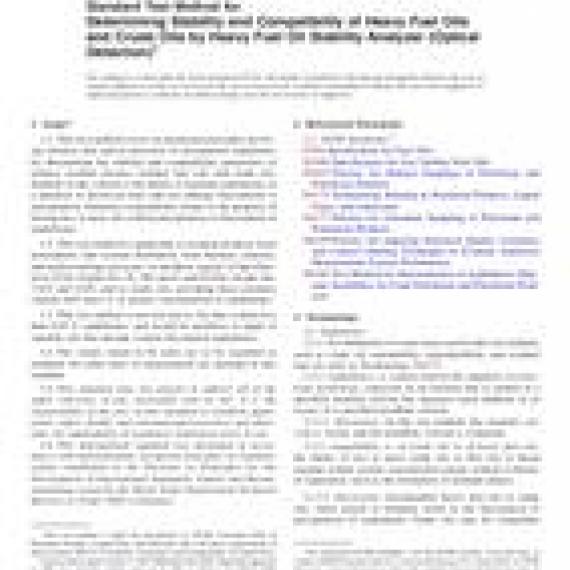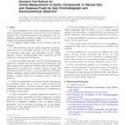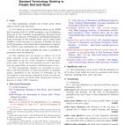No products
ASTM D7112-18
ASTM D7112-18 Standard Test Method for Determining Stability and Compatibility of Heavy Fuel Oils and Crude Oils by Heavy Fuel Oil Stability Analyzer (Optical Detection)
standard by ASTM International, 07/01/2018
Full Description
1.1This test method covers an automated procedure involving titration and optical detection of precipitated asphaltenes for determining the stability and compatibility parameters of refinery residual streams, residual fuel oils, and crude oils. Stability in this context is the ability to maintain asphaltenes in a peptized or dissolved state and not undergo flocculation or precipitation. Similarly, compatibility relates to the property of mixing two or more oils without precipitation or flocculation of asphaltenes.
1.2This test method is applicable to residual products from atmospheric and vacuum distillation, from thermal, catalytic, and hydrocracking processes, to products typical of Specifications D396, Grades No. 5L, 5H, and 6, and D2880, Grades No. 3-GT and 4-GT, and to crude oils, providing these products contain 0.05 mass % or greater concentration of asphaltenes.
1.3This test method is not relevant to oils that contain less than 0.05% asphaltenes, and would be pointless to apply to unstable oils that already contain flocculated asphaltenes.
1.4The values stated in SI units are to be regarded as standard. No other units of measurement are included in this standard.
1.5This standard does not purport to address all of the safety concerns, if any, associated with its use. It is the responsibility of the user of this standard to establish appropriate safety, health, and environmental practices and determine the applicability of regulatory limitations prior to use.
1.6This international standard was developed in accordance with internationally recognized principles on standardization established in the Decision on Principles for the Development of International Standards, Guides and Recommendations issued by the World Trade Organization Technical Barriers to Trade (TBT) Committee.


































